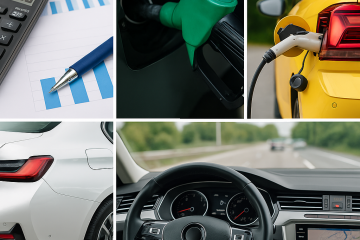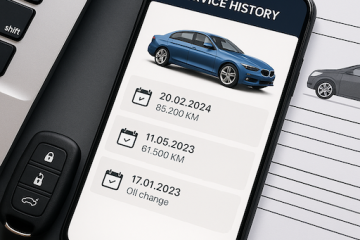Market Insight: 2024 set to be the year that sparks will fly

A new year will bring new opportunities for keen-eyed and data-informed used car retailers – especially with electric vehicles – as One Auto API Commercial Director, Rupert Pontin, explains…
2023 was undoubtedly a positive period for new car sales.
As the latest SMMT figures show, last year saw the new car market deliver its best performance since 2019 with 1.903 million registrations, representing a 17.9% year-on-year increase.
Close inspection of those figures shows the growth was predominantly fuelled by fleet and business sales which capitalised on improved supply plus an appetite for new technologies and the latest models.
And, speaking of new technology, within those figures we can see that battery electric vehicles (BEV) hit record sales volumes. That’s surely a positive, right?
Well, all may not be as it seems as BEV market share actually fell from 16.6% to 16.5% – which is a real concern given the Government’s zero emission vehicle (ZEV) mandate is now legally binding.
What is the ZEV mandate?
ZEV legislation will eventually force all car and van manufacturers to only sell emission-free vehicles by 2035 and the switch will be enforced in stages over the next 11 years, starting with a legal requirement for 22% of new cars sold this year to be pure electric.
In 2025 the mandate will require 28% of new car sales to be EVs, in 2028 it will be 80% that need to be emission-free and, by 2035, 100% of all new vehicles sold will have to be pure electric.
Manufacturers that fail to meet these targets can face fines of £15,000 for every vehicle sold that isn’t compliant.
Given the stagnation in BEV market share at 16.5% of total new car sales, there is clearly work for manufacturers to do to avoid serious financial penalties, especially in the face of a recent cooling of consumer interest in pure electric vehicles (already this year we have seen reports of Volkswagen delaying the launch of their smaller, cheaper EV range).
So, with a need to increase like-for-like EV sales by almost a third in 2024, what can be done to force that volume into the market?
Given their influential role in driving recent new car sales success, instinctively we may turn to fleet and business buyers to come to the rescue.
However, they are already driving the vast majority of new BEV registrations – in 2023 BEV large fleet and business sales equated to 77.1% of total new BEV sales volumes (compared with 57% of overall market).
So, the private retail sector is going to have to do some serious leg work and that is likely to mean a further increase in manufacturer incentives such as heavy deposit contributions, low rate finance and, potentially, much more pre-registration.
In recent days, the National Franchised Dealer Association (NFDA) has gone a step further and is calling on support from the government to offer more attractive price incentives.
Echoing this cry for help – and underlining that just one in 11 private buyers chose a BEV last year – the SMMT has proposed temporarily halving VAT on new BEVs for three years which, it says, would give consumers a fiscal incentive at a level similar to that enjoyed by businesses and fleets, yet would reduce the Treasury’s tax take by just 22% per vehicle.
Whether the Government decides to step in or not, it’s safe to say that generous support and mouthwatering incentives could well make 2024 the year that it becomes really attractive for retail consumers to buy new electric vehicles.
But what does this all mean for used car EV retailing?
A time of divided opinion
Let’s start with a holistic look at the used car market.
Interestingly, depending on where you look for information, there are a range of different viewpoints on the performance of the used car sector right now – ranging from it being worryingly quiet through to calm reassurance that everything is fine.
Recent headlines around the wholesale market highlighted a continuation in a negative trend in the second half of 2023, with a further 2.1% decline in wholesale prices in December.
While no one likes to see a downward curve when it comes to values, it should be noted that December’s reported fall in wholesale values was actually smaller than the 4.2% drop we saw in November – more in line with what we would expect to see at the end of the year.
Combine this with some positive anecdotal comments we are hearing from our customers and partners, and it would seem there are initial signs of the wholesale market starting to stabilise into a more seasonal pattern – we’ll be keeping a keen eye on January’s figures in that regard.
From a retail perspective, price realignment also continues.
Just this week, Auto Trader’s Retail Price Index showed retail values contracted 5.6% on a year-on-year and like-for-like basis in December. This represents the fourth consecutive monthly fall in values and, while prices are still 35.5% higher than the same time four years ago, it could be an indication that wholesale trends are starting to make their way into the retail sector.
One thing we can be 100% confident about is that an unstable market emerging from a period of volatility brings increased risk in used car retailing.
So canny retailers must analyse multiple data sources on a daily basis to inform purchasing decisions and maximise profit.
Which leads us seamlessly into used car EV retailing.
To EV or not to EV?
With the significant level of incentivisation we anticipate for new EV sales in 2024, the pessimistic view is to avoid used EV retailing at all costs.
The doom mongers among us will insist that high levels of financial support in the new car market will decimate used EV values that have already been nosediving throughout 2023.
A look back at the most recent used car retail figures shows us that the average cost of a used EV was down 22.7% year-on-year to £29,718 in December. However, it is worth noting that many EVs now have a much closer residual value performance when compared to ICE vehicles, thus levelling the retail price playing field.
The more optimistic view is to embrace the opportunities that an increased knowledge, acceptance and desire for EV technology will bring.
With a growing pool of used EVs to choose from, there will certainly be good value vehicles out there which can be sold at a profit to customers that want to make the switch to electric but may not want to go down the new car route – or still can’t afford to, even with generous incentives.
Just as with ICE vehicles, the key to successful used EV retailing will lie in watching market metrics like a hawk – using a range of EV data sources to identify the tasty opportunities and then strike with precision when the time is right.
This increased EV knowledge within your business will arm your teams with the information they need to sell those vehicles with honesty to customers that want to transition to electric – confidently addressing concerns around key aspects such as insurance costs, range and battery health.
These transparent transactions will prove you can be trusted and help you stand out from the crowd for the right reasons.
And, as your reputation grows, so will your profits.
Here to help
If you’re wondering what you can do to support buyer education and build confidence in used EVs – with a particular emphasis on overcoming fears about battery health – then be sure to sign up to our first webinar of the year “Mastering Used EV Marketing” – Learn More and register for free


